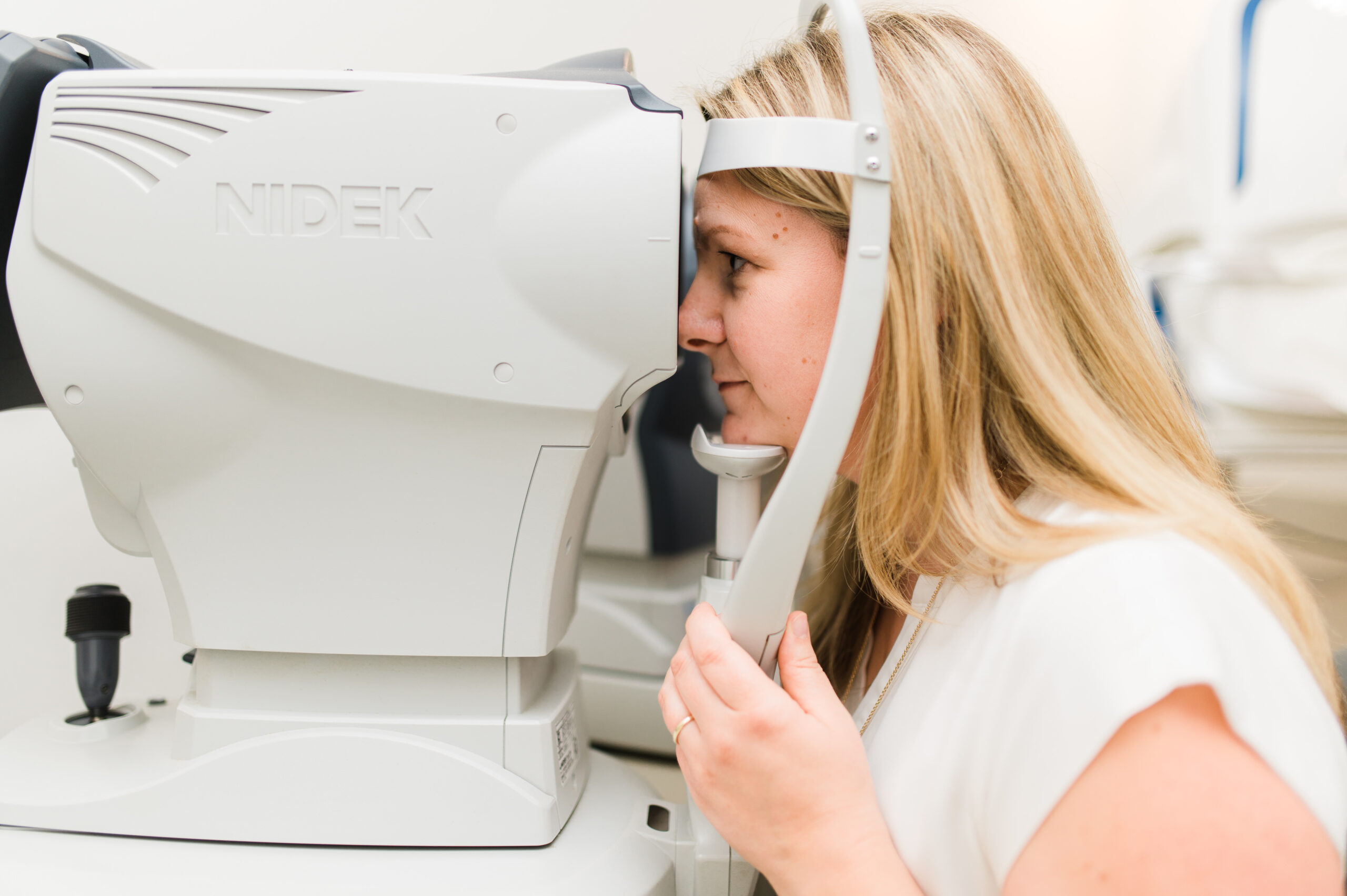
Eye Care Management in Kamloops, BC
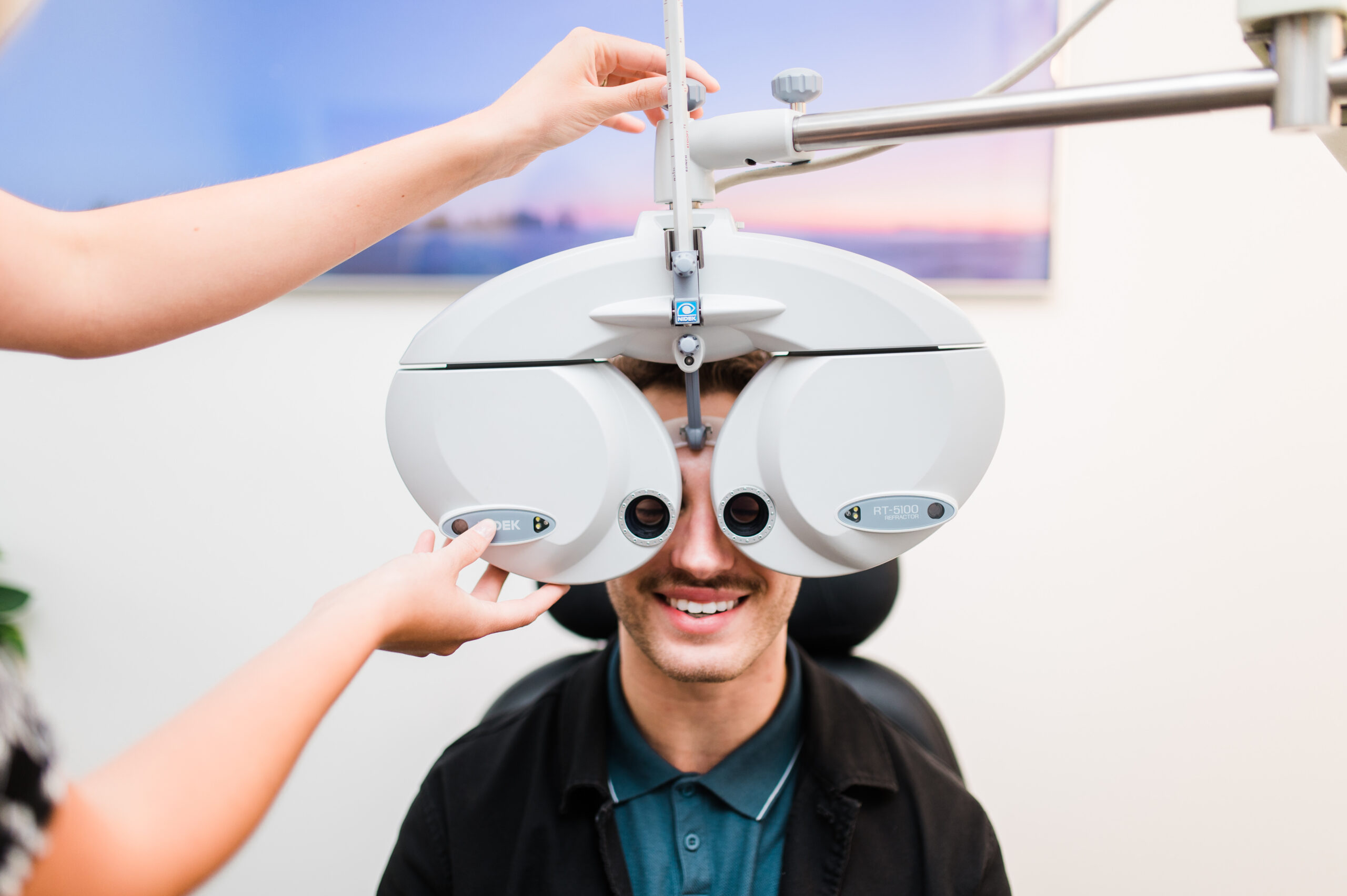
Advanced technology to achieve early detection and diagnosis.
AGE-RELATED MACULAR DEGENERATION
As we age, our bodies begin to slow down. When it comes to our eyes, this usually means a drop in visual acuity and an increased risk of ocular disease such as age-related macular degeneration (AMD) or cataracts.
At Nicola Eye Care, we invest in the finest eye examination equipment available to ensure that even the faintest traces of eye disease can be observed and quantified, allowing our doctors to diagnose conditions at their earliest stage.
Eyesight lost to AMD is permanent, so early detection is vital for protecting your long-term vision. Make a booking for a comprehensive eye health exam today if it’s been more than a year since your last appointment.
OUR TECHNOLOGY, YOUR EYE HEALTH
Zeiss Cirrus HD – Optical Coherence Tomography
We use this equipment to build up exceptionally high resolution images of the retina, in 3D. The resolution is so high in fact, we can clearly see cells which are only a few thousandths of a millimetre across, and thus search for any of the outward signs of AMD around the retina.
Optomap Retinal Imaging
The benefit of the Optomap technology is that we gain a panoramic view of almost 100% of the retina in a single image, in less than a second. Our Daytona model also has the capability to quickly capture fundus autofluorescent images, that allow us to easily see deep tissue health conditions like retinal edema (swelling), scarring and optic disc drusen. In conjunction with OCT, we can construct an exact picture of your retinal health.
Amsler Grid
Our exams are not purely about eye health, but also about how well you are seeing. The Amsler Grid is a simple test which tests the quality of your central visual field. The grid, in particular, allows us to visualize how AMD is influencing your eyesight.

HOW EARLY DETECTION CAN MAXIMISE VISION RETENTION
There is no cure for age-related macular degeneration. However, vision loss also does not usually occur overnight, but rather is most often a gradual process which causes a slow decline in central vision. It does not cause total blindness, but can obscure your central eyesight to the point of low vision.
What we can do is offer referral for specialised treatment (including anti-VEGF therapy in some cases) to slow progression and limit the impact of the disease. Some dietary changes have been shown to significantly slow down macular degeneration. The earlier we diagnose, the quicker we can look at management options for the disease and the longer you will live with quality vision.
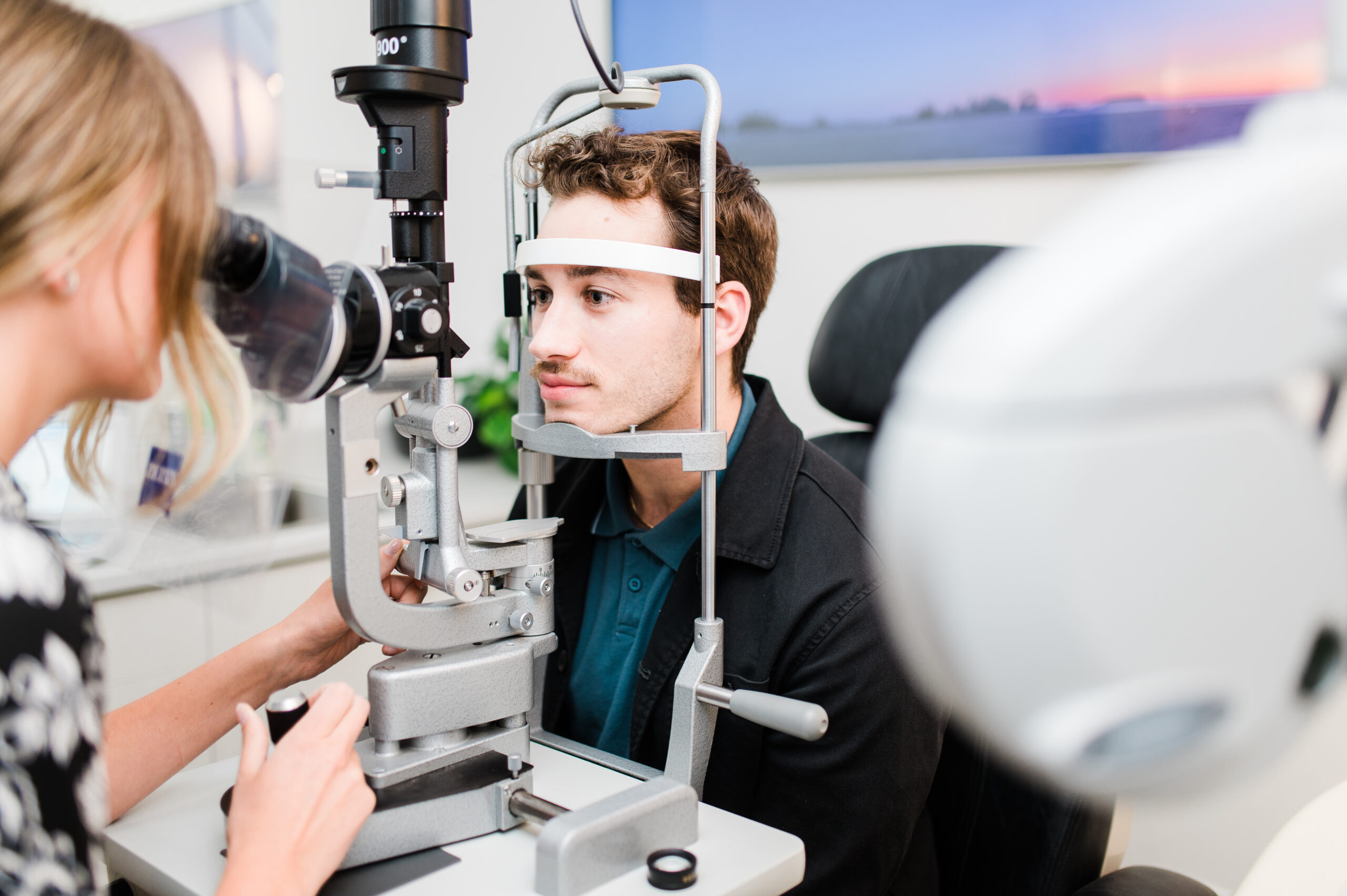
Late Detection is Better than No Detection at All
Even if your central vision is substantially affected, we can work with you to introduce visual aids and devices to improve your quality of life at home. Day-to-day tasks like reading, watching TV or surfing the net – which may be impossible under normal circumstances – can become part of your life again.
It’s never too late to act on AMD, so make sure you keep attending your annual eye exams, and feel free to contact our practice if you have any questions or would like more information about macular degeneration.
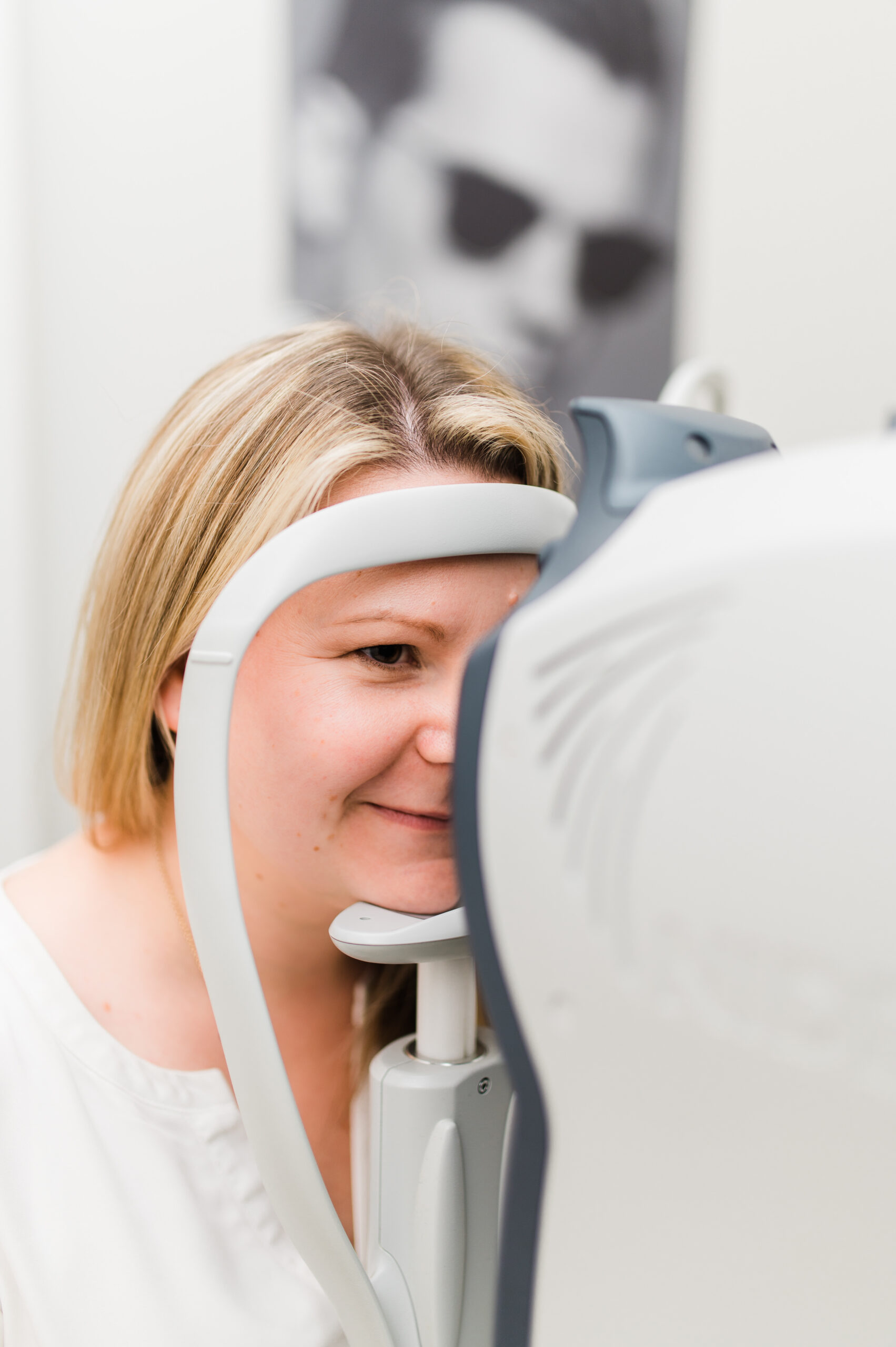
Cure your cataracts with the latest in technology.
CATARACT EXAM & MANAGEMENT
A cataract is a painless, cloudy area in the lens of the eye. Over time, it can block the passage of light to the nerve layer (retina) at the back of the eye, leading to obscured vision in the affected eye.
Cataracts can form at any age, but are more common as we get older. They can also occur after an eye injury, as a result of eye disease, as a side effect of certain medications, or as a result of medical conditions such as diabetes. Advances in technology mean cataracts can now permanently be removed through a simple, extremely safe surgery

What is the Purpose of a Cataract Exam?
Your doctor will review your medical history and perform a series of tests to evaluate your visual acuity and ocular health. Combined, this will not only confirm the diagnosis, but also quantify the degree and impact of the cataract.
By assessing your eye health, we can determine if there are any other issues. If you suffer from a chronic eye disease like age-related macular degeneration or glaucoma, have had previous eye surgery, have certain medical conditions, or take certain medications, surgery may pose extra complications.
If all else is well and the cataract is obscuring your vision to the extent that your work or day-to-day life is affected, we will recommend removal and arrange referral to a cataract surgeon on your behalf.
CATARACT SURGERY IS SAFE AND PROVEN
The success rate for cataract is over 95%, thanks to its extensive practice and its highly refined procedure. We will refer you to a surgeon who is very qualified and experienced, so you’re in safe hands, and will work with your surgeon to provide you with top quality before and after surgery care.
How Does The Procedure Work?
The entire lens is removed, and the cataract along with it. Your doctor will apply a local anesthetic prior to starting. Controlled, high-frequency ultrasound is applied to the lens, causing it to slowly break apart. Once the entire lens is separated, all the pieces are removed via suction.
Lastly, a replacement intraocular lens will be fitted. No new cataract can grow on the artificial lens, so this is a permanent cure.
Recovery
People’s vision is usually significantly improved immediately after surgery, but complete healing and final ocular health and refraction are completed 6 weeks after the surgery.
Who Is A Candidate For Surgery?
Once your cataract has begun to impair your ability to do daily activities (even for things as mundane as watching TV), cataract surgery becomes an option. We will be able to tell you whether you are a good surgical candidate.

VISION CORRECTION WHEN YOU NEED IT
Removing the cataract allows you to see in full, without a muted, opaque layer in your eye. However, you may still require vision correction for some distances in one or both eyes following the procedure. We stock over a thousand different frames in our practice, so you won’t be short of choice. See our optical brands
We can also calculate your prescription and cut brand new lenses in our on-site optical lab, so you’ll have clear, sharp vision in the end.
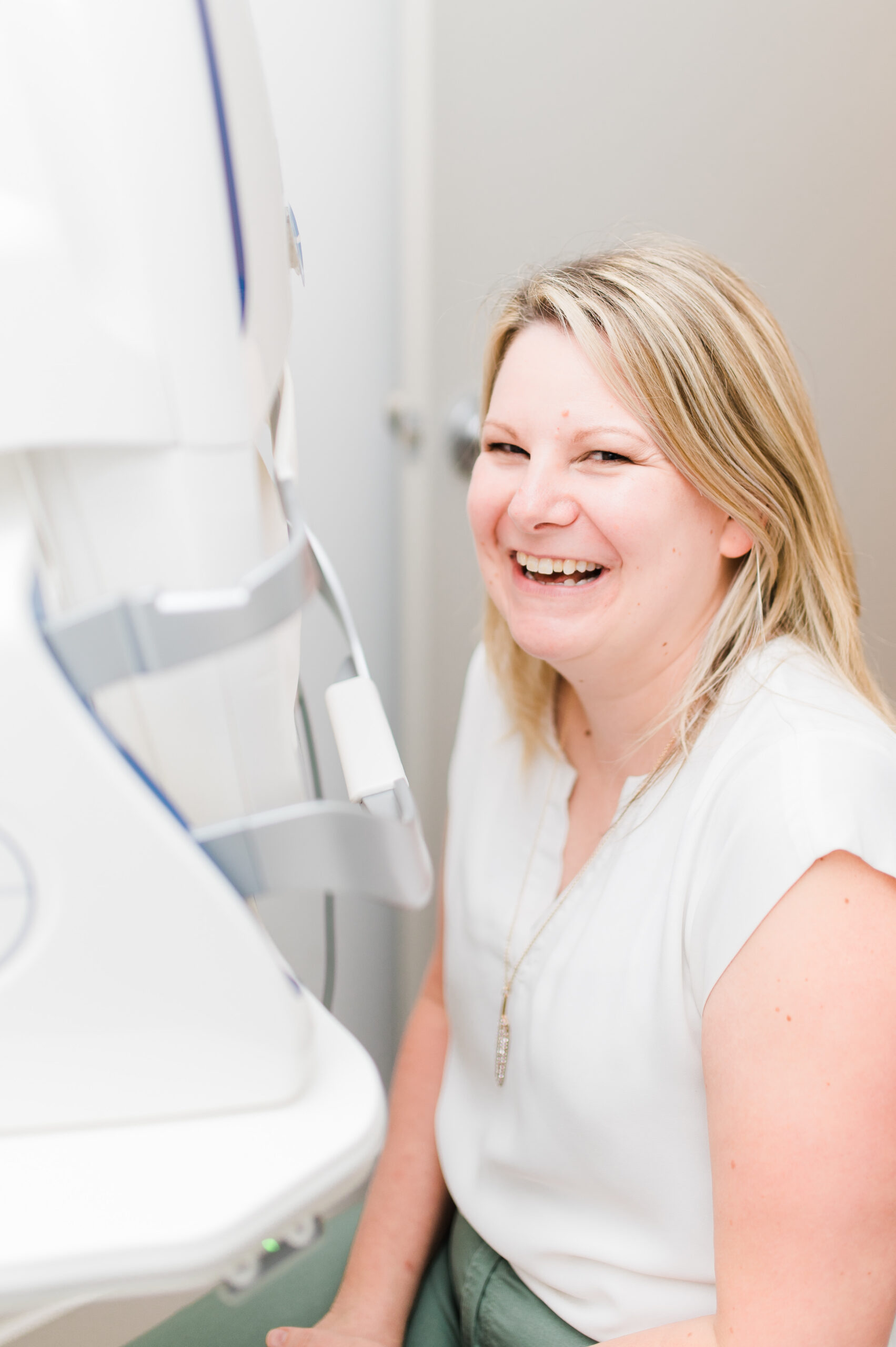
Don’t lock yourself away—deal with it.
CONJUNCTIVITIS
Conjunctivitis has a reputation for being an extremely contagious disease – did you know that there are 3 forms of the condition, of which two are quite contagious?
It’s important to get a professional consultation, since self-diagnosis can lead to a treatment regime which does more harm than good. Book an appointment today and benefit from one of our hour-long eye health exams as well as testing that is tailored to confirming the type and severity of your condition.
If you or your child exhibits serious, fast-onset symptoms, consider arranging an emergency eye appointment rather than starting a self-diagnosed treatment plan.

WHAT IS CONJUNCTIVITIS?
The membrane that lines the eyelid and covers the surface of your eye is called the conjunctiva. When this gets infected, or irritated, by an external stimulus (like a foreign bacteria or virus) it can become inflamed, red, itchy and even swollen. A full list of probable symptoms is as follows:
- Itchiness and inflammation
- Swelling
- Fatigue
- Excessive tearing
- Watery discharge (viral conjunctivitis) or thick, yellow discharge (for bacterial cases)
- A persistent burning sensation
- Intermittent blurred vision

Can I Avoid It?
There are 3 types of conjunctivitis: bacterial, viral and allergic. The only form you can truly “avoid” is the allergic type, if you have known allergies (such as pollen) and can actively avoid spores. For the others, good personal hygiene will help, but there’s not much you can do when exposed to the pathogen involved.
Conjunctivitis is very common among schoolchildren, where outbreaks can spread around entire classrooms in a matter of days. If you hear news of an outbreak at school, it may be advisable to review proper handwashing techniques with your kids and monitor them closely for the signs and symptoms of conjunctivitis.
BACTERIAL, VIRAL AND ALLERGIC CONJUNCTIVITIS
Allergic
This is the least common but most easily controlled type of pink eye. If you suffer from seasonal allergies like hayfever, you are more at risk of developing allergic pink eye. It cannot be spread by touch, and symptoms may be alleviated by using antihistamines or other anti-allergy medications, and avoiding your trigger substance.
Viral
Carried by the same pathogens which can cause the cold and flu viruses, this is very contagious. The symptoms are not usually vision-threatening or mortal, but they can be extremely uncomfortable for up to several weeks.
Bacterial
This is the most common strain of the disease, and is also very contagious. Usually spread through hand-eye contact, by washing your hands regularly you improve your chances of avoiding infection.
How Serious Is The Condition?
Each form of red eye causes similar symptoms and can take several weeks to resolve. Mild to moderate discomfort can be alleviated by using warm compresses or lubricating eye drops, while severe cases may require medical intervention specific to your case.
If you are struggling with painful or very persistent symptoms, please get in touch so we can prescribe a treatment option to alleviate your discomfort.

Understanding flashes & floaters.
FLASHES & FLOATERS
Floaters (or “spots”) affect a huge number of Canadians, though they are more prominent in older individuals. They are the small, semi-transparent squiggles or specks which float around your vision. They’re completely natural, and you’ve probably noticed them when looking in a mirror or at another bright surface.
Flashes, on the other hand, are disruptions to your vision caused by trauma or impact on the optic nerve. Often indicative of an underlying problem, they are frequently referred to as “seeing stars”.
If you notice floaters or experience flashes for the first time, arrange an appointment for a full eye health exam – vision problems can follow swiftly, so this is important.
ALL ABOUT FLOATERS
Inside your eyeball, between the cornea and the retina, is an expanse of gel-like substance called the vitreous. Over time, the water elements in the vitreous molecules break down, transforming the gel into a more liquid state.
This change also introduces minute particles which simply float around in the liquid.
Are Floaters Dangerous?
On their own, floaters are almost always benign and harmless. However, if you notice a sudden increase in the number or activity of floaters this can be a sign of a retinal tear or hole. A good rule of thumb is to visit an optometrist:
- The first time you observe floaters
- If the state of your floaters changes considerably
Can They Be Removed?
Floaters are permanent. Over time, your eye begins to compensate for their presence and starts to ignore them. As a result they stop being noticeable and, often, cease to impact your vision at all.
ALL ABOUT FLASHES
Flashes are a little different. When light passes the cornea and lands on the retina, it is transmitted to the brain through the optic nerve. Flashes are the visual result of any trauma or impact to the optic nerve.
Are They Dangerous?
They are often indicative of a serious underlying condition. After any head trauma (like a collision in sports) the retina or optic nerve can be damaged. You may be concussed, and it’s important to check with one of our specialists soon after the injury.
Remember you do not have to fall unconscious to suffer from a concussion. If you have any flashing sensations in your vision, consider arranging an emergency eye exam so we can investigate – you may be at risk of retinal detachment, which, if left untreated, can cause total blindness in the eye.
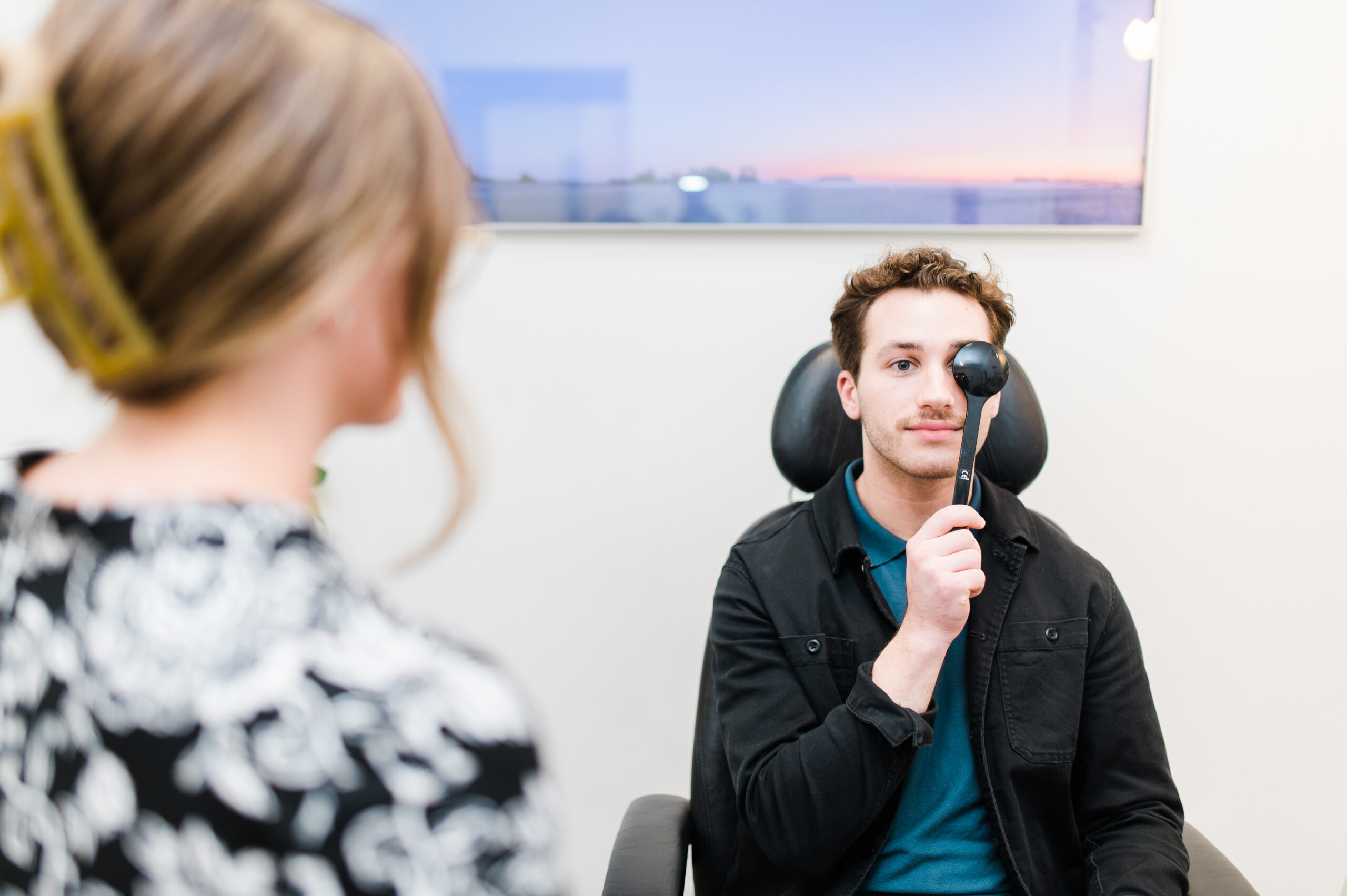
Dealing with the silent thief of sight.
GLAUCOMA TESTING & MANAGEMENT
For diseases which have no cure, early diagnosis and proactive management are critical to retaining a useful amount of vision. Glaucoma quietly steals away your peripheral vision, without any pain, and if left untreated, can cause severe tunnel vision or total blindness.
Despite the lack of a cure, it is possible in many cases to slow progression, minimise associated symptoms and maintain a high standard of independent living.
Been more than a year since your last eye exam? Arrange an eye health exam today so we can screen for glaucoma, as well as any other vision-threatening diseases like cataracts or macular degeneration.

HOW DO I SPOT A DISEASE WHICH HAS NO SYMPTOMS?
The silent, hidden nature of glaucoma is why we recommend all patients have an eye exam at least every 24 months (preferably annually).
However, if you’ve noticed any problems with your peripheral vision – like vehicles or cyclists suddenly appearing at a junction while driving – then you need to come in for an appointment.
TESTING FOR GLAUCOMA
At Nicola Eye Care we only use and maintain the most advanced and diagnostically powerful equipment available. During testing your doctor will:
- Assess your ocular health, particularly the inner eye
- Evaluate your visual field
- Confirm the type and severity of glaucoma
Tonometry
One indicator of glaucoma is elevated intraocular (inner eye) pressure (IOP). Tonometry is the process of measuring this pressure – if yours falls outside of normal bounds, it is indicative of a problem. Our state-of-the-art non contact tonometer administers a softer, quieter air puff than older machines, and simultaneously measures, the thickness of your cornea, allowing us to determine the accuracy of our measurements. If needed, we will perform contact tonometry for more precise IOP measurement.
Ocular Coherence Tomography
This imaging technique creates an extremely detailed, 3D picture of the retinal nerve fibre layer (RNFL) as it exits the optic nerve head inside the eye. Glaucoma causes thinning of the RNFL that leads to vision loss. This very sensitive test allows us to measure changes to your ocular health before you have lost any vision, and allows us to monitor very closely for progressive changes over time.
Visual Field Exam
Glaucoma destroys side vision, and this exam tells your doctor exactly how limited your visual field has become. We can detect tiny flaws in the peripheral vision, so even if you are in the earliest stages of glaucoma, diagnosis is possible.

LIVING WITH LIMITED PERIPHERAL VISION
Glaucoma only targets your peripheral, so without any other undesirable conditions your central vision should remain quite clear. Even if this area is very narrow, it will be sufficient for reading and similar tasks, though driving and some types of work could become infeasible.
Whether it’s through attempting treatments, giving advice or helping to identify lifestyle aids which may help you overcome your limited sight, our doctors will be with you every step of the way.
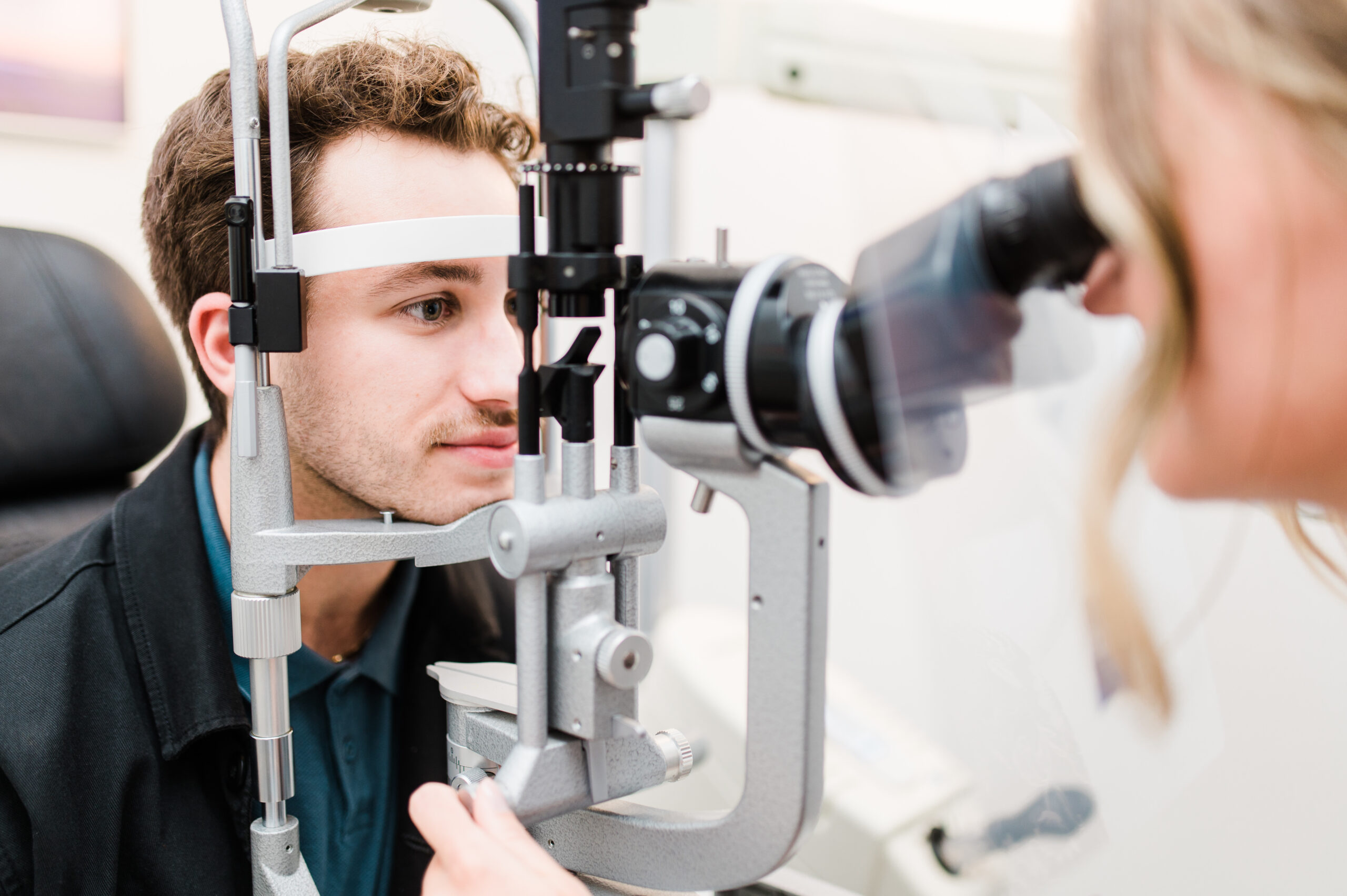
Emergency eye care for when it matters most.
EMERGENCY EYE CARE IN KAMLOOPS, BC
At Nicola Eye Care, nothing matters more to us than your eyes. When the unexpected happens, we will be there for assessment, diagnosis and to provide treatment as soon as you need it.
700 Canadians suffer eye-related injuries every day in the workplace alone. If you have endured atrauma and are concerned for your eye health or vision, contact us immediately and we’ll arrange an emergency appointment.
Loss Of Sight? Act Now.
With eye injuries, loss of sight is very rarely recoverable. If your eyesight shows black spots or simply does not extend as far as usual, you should visit our practice or the local emergency room as soon as possible. The sooner an expert can examine your condition, the higher the chances of making some recovery.

WORKPLACE INJURY PREVENTION
The manufacturing, chemicals and construction-based industries are most prone to eye injuries, by nature of the work involved. In order to minimise the risk – and over 90% of workplace eye injuries are completely avoidable – it’s important to wear the right protective speciality eyewear.

EXPERIENCING PROBLEMS WITH YOUR EYESIGHT?
The problem with eye injuries is that they are not always obvious; they can also be caused by much less severe trauma than you may expect. A simple knock to the head could cause a concussion (without falling unconscious) or activate another problem.
If you’ve experienced any of the following symptoms recently, they could be latent – but dangerous – aftereffects from an innocuous past injury:
- Black spots or patches
- Flashes (“seeing stars”)
- Tunnel vision
- Sudden eye pain
- Red, inflamed or painful eyelids
- Blurry or hazy vision